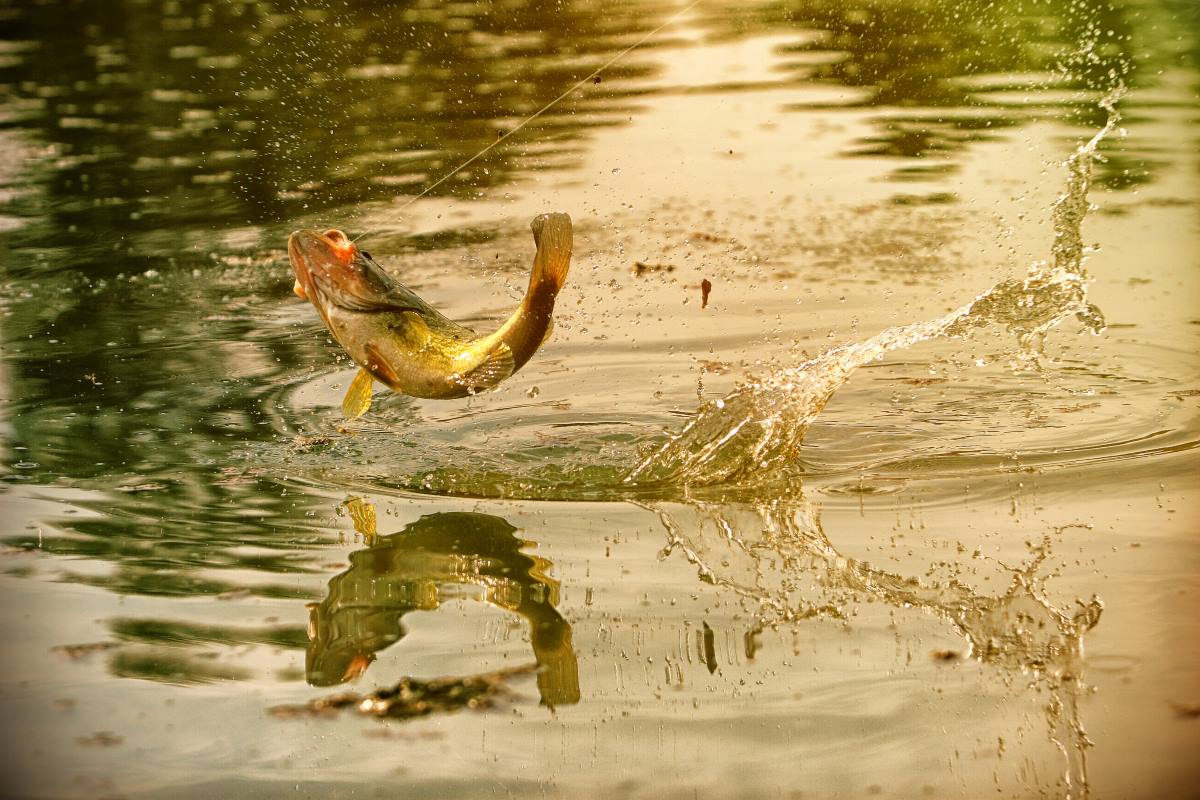Fall Fishing in Iowa

Fall Fishing in Iowa
Iowa, nature begins to transition from summer to fall. As the water temperatures drop, fish know that colder weather and winter are not far off. The coming chill will have most predatory fish on the prowl, fattening up before Mother Nature slows things down for them.
Weather
Like all of Iowa’s transitional months, the weather is one of those things that’s hard to predict. Cold fronts will push fish deep and give them lockjaw. Be a weather watcher…approaching fronts and high and low-pressure changes affect how fish feed.
Barometric pressure- the weight of the air – decreases as a storm approaches. To understand how it works, imagine the palm of a giant hand easing up as it presses on the water’s surface. It’s a touch lighter, hence a “low pressure”. The water isn’t as compressed as it was, and fish can move more easily. The mood of many fish often changes to a more ‘active’ attitude. They move around more freely and feed. Falling pressures are some of the best times to chase after your favorite quarry. Depending on the species you’re chasing, they can be pretty aggressive as the storm front approaches. Just watch closely; you don’t want to put yourself or anyone you may be in harm’s way. Fall storms are not typically harmful, but then again…this is Iowa…when do we do normal.
A storm also brings clouds and wave-creating wind, reducing sunlight penetration. Active fish can move to shallower water. The absolute best fishing periods often occurs when barometric pressure reaches its lowest point, just before the front arrives.
Bass
By the time fall rolls in, most of the forage that bass have been feeding on has depleted, with one exception…baitfish. This is a time of year when mimicking minnows can be incredibly productive because the bass feed heavily on them. These fish are active and hungry! Look for bass in shallow creek channels that lead to the main lake. A spinner bait will be a great search tool as you look for active fish.
The best thing about these baits is that you can buzz them just below the surface in shallow water or let them fall and retrieve them slowly to get them deeper. A Colorado blade is an excellent choice for this type of fishing; double Colorado will help keep the bait higher in the water column. You can also have a combination of a Colorado and willow blade; this creates a nice “thump” in the water and gives the illusion of a small bait fish. As the weather cools off even more, start slowing down your presentations with jigs and plastic worms, small and large. Fall bass fishing can yield some awe-inspiring results, but the only way to find out is to get out there, employ new tactics, and learn.
Crappie & Bluegill
As September gives way to October, many lakes will still have a thermocline, the transition layer between the warmer mixed water at the surface and the cooler deep water below. The fall turnover is a phenomenon where the lower layer of the lake mixes with the upper layer of water in a short period of time. Finding crappie this time of year can be difficult, especially for 2 to 3 days following the turnover. Find crappie suspended along a creek channel feeding into the main lake. Once located, cast a 1/32 oz jig into them, working your way back slowly. You can also suspend a jig under a bobber, and with the wind blowing a bit, the small waves will do some of the jigging work for you. Like bass, they’ll feed on schools of baitfish that thrive in the lake; using a small crappie-sized minnow will yield results.
Catching bluegills in the fall, especially as the waters begin to cool, can be challenging sometimes. These fish may get sluggish and slow down. But ask any ice angler what the solution is, and they’ll tell you to downsize. Smaller, lighter jigs and plastics will do the trick. A light line and a light rod will help you bring some of these fish to the boat or shore. Consider using tungsten jigs, especially if you find a group of active fish. These baits allow you to get the offering back down to the fish quickly, which is vital if you’re vertically jigging for them.
Walleye
A common theme throughout your plan for fall fishing is to remember that each species you are chasing after is preparing for the cold winter months. This is the time they will feed heavily in preparation for colder water. Look for water temps in the mid-50s as a signal to spend lots of time on the water. On some lakes, the best walleye bite, particularly during the day, will be on the steepest breaks into deep water. On others, a shallow weed or rock bite will become dominant. Long-line trolling with shallow diving crankbaits at this time of year, particularly at night along shallow weeds or rock, can be effective on calm and clear conditions. It’s a method that produces some of the biggest lake walleyes of the year.
Think Spring (At Times)
As the weather begins to cool and water temps dip, most fish, in general, will transition to shallow water. A simple reason is it’s warmer there! So, as you think about heading out for some fall fishing, remember to visit those spots that were effective producers in the spring. You’ll likely find that fish have moved back into those areas and are actively feeding as they’re preparing for the winter months ahead. Happy fall fishing and tight lines!
by Ben Leal
August 2025
If you have interest in cattle check out our other websites


